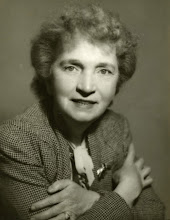BY KIRSTEN M.J. THOMPSON | DECEMBER 14, 2013
Prior to modern methods of birth control, women relied on withdrawal or periodic abstinence. These methods often failed.
Around 3000 B.C. Condoms made from such materials as fish bladders, linen sheaths, and animal intestines.
Around 1500 First spermicides introduced which used condoms made from linen cloth sheaths and soaked in a chemical solution and dried before using.
1838 Condoms and diaphragms made from vulcanized rubber.
1873 The Comstock Act passed in the United States prohibiting advertisements, information, and distribution of birth control and allowing the postal service to confiscate birth control sold through the mail.
1916 Margaret Sanger opens first birth control clinic in the United States. The next year she was deemed guilty of maintaining a public nuisance and sentenced to jail for 30 days. Once released, she re-opened her clinic and continued to persevere through more arrests and prosecutions.
1938 In a case involving Margaret Sanger, a judge lifted the federal ban on birth control, ending the Comstock era. Diaphragms, also known as womb veils, became a popular method of birth control.
1950 While in her 80s, Sanger underwrote the research necessary to create the first human birth control pill. She raised $150,000 for the project.
1960 The first oral contraceptive, Enovid, was approved by the US Food and Drug Administration (FDA) as contraception.
1965 The Supreme Court (in Griswold v. Connecticut) gave married couples the right to use birth control, ruling that it was protected in the Constitution as a right to privacy. However, millions of unmarried women in 26 states were still denied birth control.
1968 FDA approved intrauterine devices (IUDs), bringing early versions like the Lippes Loop and Copper 7 to market.
1970 Feminists challenged the safety of oral contraceptives (the Pill) at well-publicized Congressional hearings. As a result, the formulation of the Pill was changed, and the package insert for prescription drugs came into being.
1972 The Supreme Court (in Baird v. Eisenstadt) legalized birth control for all citizens of this country, irrespective of marital status.
1974 The FDA suspended sale of the Dalkon Shield IUD due to infections and seven documented deaths among users. Although other IUD designs were not implicated, most IUDs were slowly taken off the US market due to the escalating costs of lawsuits in subsequent years.
1980s Pills with low doses of hormones were introduced, along with a new copper IUD, ParaGard (1998). (CuT380a). Growing awareness of the Yuzpe regimen for emergency contraception.
1990s Introduction of Norplant, the first contraceptive implant (1990),DepoProvera, an injectable method (1992), FC1/Reality, a female condom (1993) and Plan B, and a dedicated emergency contraceptive product (1999).
2000s Rapid expansion in method availability and improvements in safety and effectiveness, including introduction of Mirena, a new levonorgestrel-releasing IUD (2000), Ortho Evra, a hormonal patch (2001), Nuvaring, a vaginal ring (2001), Essure, a method of transcervical female sterilization (2002), Implanon, a single-rod implant (2006), and FC2, an improved female condom (2009).
2002 The first implant, Norplant, is taken off the US market.
2010s Ella, a new emergency contraceptive pill (2010) and Skyla, a new levonorgestrel-releasing IUD (2013) are introduced. Growing use of the copper IUD for emergency contraception.
2013 After protracted regulatory and legal battles, one brand of emergency contraceptive pill (Plan B One-Step) becomes available without a prescription on drug store shelves.
Today More research is needed on woman-controlled methods that protect against STIs and birth control for men. Barriers to accessing reliable contraception remain for women worldwide.
May 22, 2014
A Brief History of Birth Control in the U.S.
про что:
birth control,
история,
США
Posted by
Борис Денисов
Subscribe to:
Post Comments (Atom)





No comments:
Post a Comment